How Australian is Australian Urban Fantasy?
It is always a little difficult to identify the nationality of fantasy literature, and most of the time that is part of the appeal. It is literature that transforms and transports. It is a window to other worlds and other’s rich imaginations. However, urban fantasy has always been a genre that founded itself within the real, the mundane and specifically the urban.
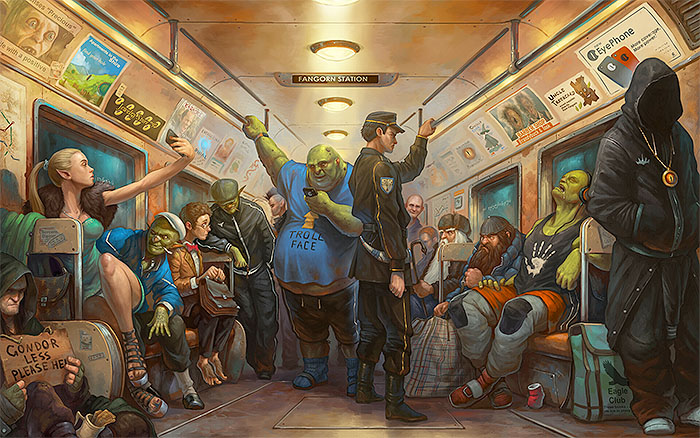
There are many different types of urban fantasy, whether they be the historically set such as the works by C.J. Archer or A.W. Exley, which slant a little more fully towards paranormal romance; but still are defined by their placement within a detailed and confining city. Or, are slightly futuristic with hints of technology beyond what we have now, such as Keri Arthur’s series; or they are resoundingly set in the “now.” Regardless of the specificity of the time period they are usually soundly positioned within a city. For some, such as China Mieville’s King Rat or Ben Aaronovitch’s Rivers of London the place is so absolutely positioned it could be no where else in the world. This type of setting, of developing of place, is most common for urban fantasy set in London or generally of places quintessentially American that they resonate with the same imagery that are seen in American films. However, it is less common outside of those places.
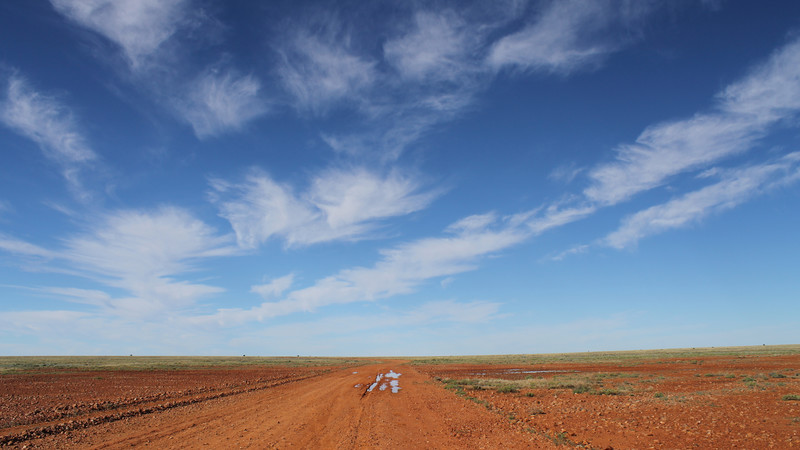
The question remains then, what is Australian urban fantasy if it is not set in a globally recognisable city? What makes urban fantasy Australian and not just generic urban fantasy?
This article is an invitation to consider the issue of a trend of overly Eurocentric mythology and settings present in Australian urban fantasy, a genre that traditionally was about the unseen. I will not pretend to have an answer to this issue, but rather, invite the reader to consider the many questions this seemingly innocuous limitation is raising in today’s world.
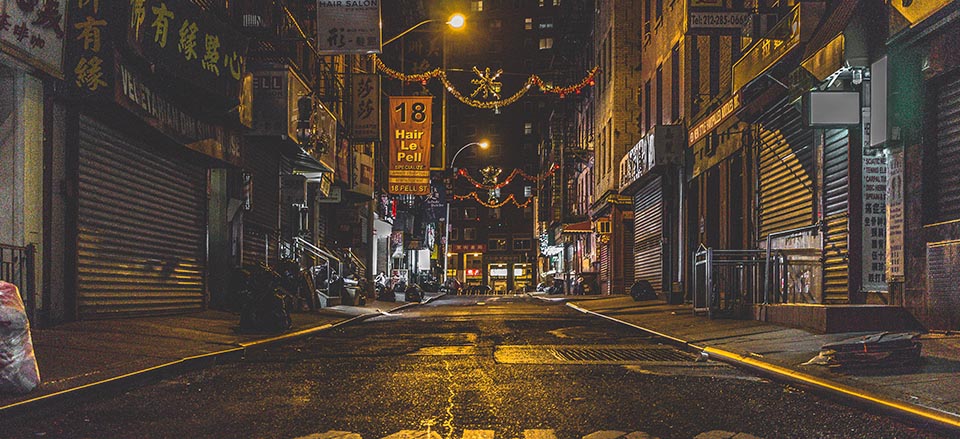
What is urban fantasy?
Urban fantasy (hereafter UF) is a genre of the fantastic that intersects with the mundane in an urbane setting (has a real world setting with fantastical elements). 1 It rose in popularity in the 1980s as a response to the over saturation of Tolkienesque fantasy of the time. 2 However, the exact parameters of the genre remain contested. An existence of fuzzy edges has allowed authors to tell diverse stories that reflect and critique the society in which they are produced. The genre is categorised by its use of an urban setting with a fantastical intersection. This means the utilisation of fantasy and supernatural elements within an urban setting to explore urban narratives. Full of hidden and liminal spaces, the cities of UF have offered modern settings that reject medievalist modes. Yet, UF does not look to the future as science-fiction does, rather, it maintains an intense tension between the modern present and the past. This trope remains true in Australian UF.

Three novels that represent Australian UF, which will be used for this discussion, are Keri Arthur’s Full Moon Rising (2006) set in Melbourne, Patricia Leslie’s A Single Light (2016) set in southern Sydney, and Angela Slatter’s Vigil (2016) set in Brisbane. Each author uses elements of Australian urban settings to present supernatural creatures encroaching on mundane life. As society has continued to be increasingly urbanised in focus, it would seem logical to see a rise in urbanised fantasy. However, this is not the work being dominantly produced in Australian fantasy. Instead, overwhelmingly in all categories of fantasy, the focus remains on medieval and Eurocentric narratives. The following discussion begins to question this dominance of European mythologies in fantasy, and particularly UF, as well as suggesting ways for writers to move forward. However, I recognise this is only a limited forum for a much larger conversation that I hope you are also interested in pursuing.
Really, how Australian is a werewolf? 3
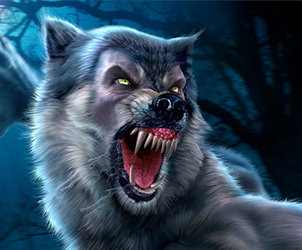
To begin, Australia does not and has never (according to current fossil studies) had wolves. It has other canine and close relative species, but not wolves. So how Australian is it to have werewolves? Australia is a country with its own rich flora and fauna, yet the predominant focus of fantasy, including UF, is of Eurocentric mythologies. Where are the weredingoes or the bunyips? Why does Australian fantasy continue to privilege a Eurocentric perspective?
The fantasy genre has always been susceptible to expectations of the marketplace and this has shaped the form of UF from the start. Although all fantasy experiences trends and fads, UF and its authors have often been driven to particular representations and even narrative approaches based on this. The rise of paranormal romance from UF is one of the best examples of this; to the degree that paranormal romance has eclipsed the presence of UF in bookshop shelves. Australian fantasy in particular has experienced critical and commercial success only with its Anglocentric, medieval setting fantasy series. Where authors have strayed from this path they have met resistance both critically and from readers. UF makes up a very, very small component of Australian fantasy, and it too conforms strongly to the larger expectations. For instance, Arthur’s werewolves are Irish, Slatter chose harpies, angels and witches, and Leslie used a variation of vampires and hunters.
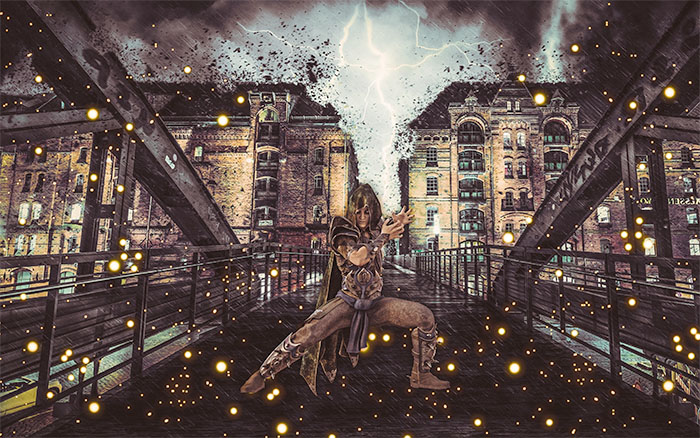
There is nothing inherently “wrong” with selecting a Eurocentric mythology or a medieval setting. What is interesting is the overabundance of this specific category of fantasy in comparison to other forms, and also the lack of support in the marketplace for alternative types of stories.
One reasonable point is made by a number of authors: that this is their own personal history. Author Sophie Masson writes “[i]t is because, for myself, as a first generation immigrant…it comes naturally.” 4 Masson goes on to discuss that her preferences for European mythologies is influenced by her own personal history and heritage. This is not an unexpected choice, as many writers draw from their own personal narratives in all genres. Helen Young outlines UF’s use of portable stories as a common element of the genre. She notes that “[w]hen they take shared stories – folktales, legends, myths, history – with them, that invisible luggage changes the nature of their home when it is unpacked.” 5 It is not surprising then that a particular nostalgia for immigrant history becomes embedded into stories, including fantastic stories. For other authors it is about using generic settings to allow them to act as global storytellers. All very reasonable points for this choice, but this does not address the absences. Australia is not a homogenised European offshoot, so why are these the dominant histories and mythologies being used?
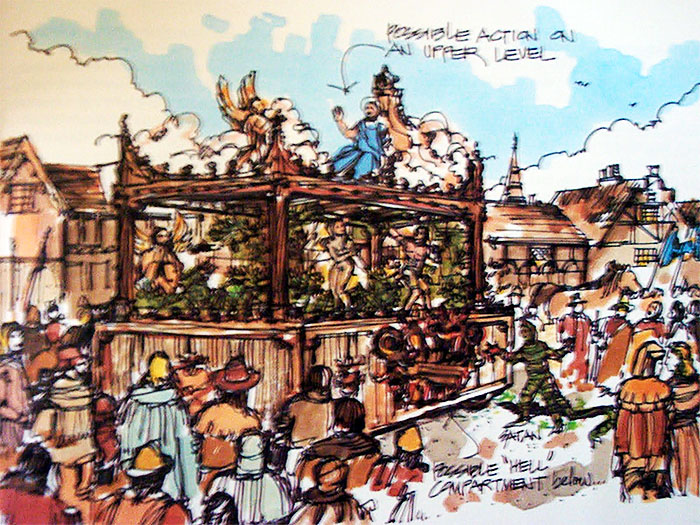
Furthermore, in the use of medieval fantasy by Australian authors there still remains a troubling sparsity of anything distinctly Australian to be present. Author Kate Constable reflects that the presence of more “Australian” fantasy “might have woken an appetite for a different kind of magic, a magic bred in the landscape I was born, rather than on the other side of the world.” 6 Are we doing a disservice to Australian readers by not connecting with the elements that make Australia unique? But what does this really look like? What makes fantasy “Australian”?

Even in UF where an Australian landscape setting is present there is a hesitancy to articulate this fully. Arthur’s series is so generically of any city that a reader would not know it as Melbourne, nor that the mythos has any Australian connection (which it does not). Leslie does draw on more recognisable presentations of the bush and coast around the Sydney area, but her mythology, and to an extent her style of storytelling, is presented in a dreamlike state that separates it from its place. Slatter, perhaps, presents the most authentic setting by utilising references to topography, and flora and fauna that is recognisably eastern Australian in origin. Yet, still in her choice of mythology it is focused on European, mainly Ancient Greek and Christian, in origin.
Both Arthur and Slatter directly call out that their supernatural creatures immigrated to Australia. Arthur frames this with an unfortunate turn of phrase that alludes to the deeply troubled Terra Nullius history of colonisation, when she describes her Irish wolves as settling in the middle of Australia where “there was plenty of land to be had.” None of these authors include any reference to, or presence of, the Indigenous people of Australia. Such silences and omissions are problematic. This is not to suggest that the inclusion of Indigenous sources into fantasy would make a text Australian, however, it is a concerning absence of a fundamental part of the country.
What is the solution?
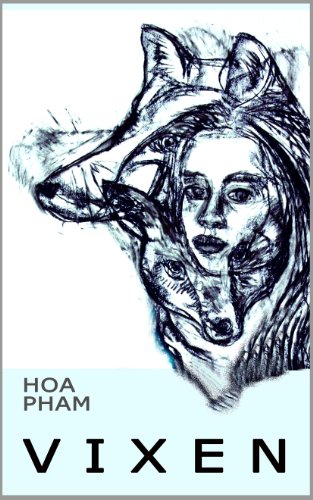
An excellent example of how some speculative fantasy fiction is already beginning to find new ways to create authentic Australian fantasy is present in Hoa Pham and Ambelin Kwaymullina’s work. From Pham’s Vixen, a reconciliation story about a Vietnamese Australian fox-spirit, where an encounter with an Indigenous land spirit provides a place for common shared experiences of trauma; to Indigenous speculative author Kwaymullina’s own work in presenting Indigenous mythologies in a modern world, there is clearly meaningful space for these narratives. Kwaymullina also advocates for a closer partnership between Indigenous and non-Indigenous writers to engage in a sharing of words and worlds. 7 However, this needs to be a respectful act with careful considerations of boundaries.
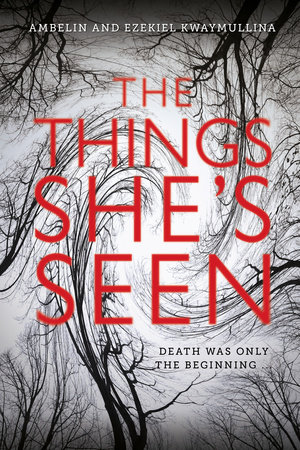
In Kwaymullina’s suggestion is perhaps a way forward. Even if a writer’s own history comes from a European context, they are living in a diverse country; looking to partnerships with groups whose own histories also enrich this country should be a consideration when writing Australian fantasy. UF is a genre of urban archaeology interested in the history and past of a place. 8 A strong thematic concern is the tension between these two states, and is this not a tension that continues to exist in Australia today? Are we not continuing to try and find a way to reconcile our past with the present we live in? UF aims to present a contemporary urban landscape, which in Australia is a diverse space, based on urban realism that intersects with the supernatural. It is a small step to consider then that the supernatural should be more than just Eurocentric in origin. Equally, the use of these Eurocentric archetypes offer a place to have conversations about the impact of colonisation. For instance in the gothic series Master of the Ghost Dreaming by Mudrooroo, the vampires act as representation for the colonial invader.
This means UF can serve as a vehicle for discussions about the intersection of the past and present in Australia. Brian Attebery is right to call out a need for commission over omission. 9 Such an act by UF written to value and acknowledge Indigenous history does not mean writers cannot engage with Eurocentric settings or mythologies. But it does mean they cannot continue to ignore Indigenous cultures and history when writing in Australia. This act of recognition would not be new to UF. The seminal authors of the genre, such as Emma Bull and Charles de Lint, engaged with the genre specifically because it offered opportunities to tell marginalised stories; to hear voices from the edges, and to acknowledge the unseen. There is no reason Australian UF cannot do the same to explore the continuing tensions of Australia’s past and present.
Furthermore, a greater focus and inclusion of the flora and fauna of Australia, as in Slatter’s Vigil is needed. For UF to be Australian it actually needs to be in Australia. What do you think? Out with the werewolves and in with the weredingoes?
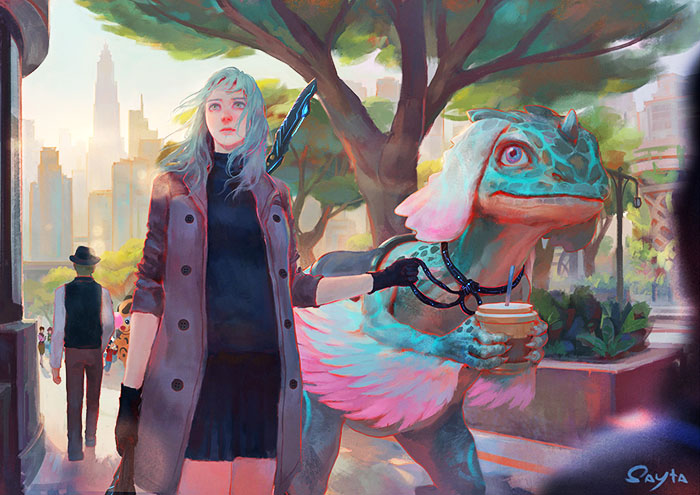
Works Cited
- Clute, John. “Urban Fantasy.” Edited by John Clute and John Grant. The Encyclopedia of Fantasy. London: Orbit, 1997. ↩
- Mannolini-Winwood, Sarai, and Krzysztof M. Maj. “Theorising the Emergent Subgenre of Urban Fantasy.” Creatio Fantastica 1, no. 58 (2018): 29–48. https://creatiofantastica.com/2018/09/16/cf-nr-1-58-2018-fantastyka-miejska/ ↩
- Mannolini-Winwood, Sarai. ‘How Australian is a werewolf? Discussing the use of European mythologies in Australian urban fantasy.’ Concepts in Popular Genre Fiction Symposium, 6-8 Dec 2021 Conference. NOTE: Much of this article comes from the conference paper, which is still available on Spotify. ↩
- Masson, Sophie, and Elizabeth Hale. “Mosaic and Cornucopia: Fairy Tale and Myth in Contemporary Australian YA Fantasy.” Bookbird: A Journal of International Children’s Literature 54, no. 3 (2016): 44–53. https://doi.org/10.1353/bkb.2016.0085 ↩
- Young, Helen. Race and Popular Fantasy Literature: Habits of Whiteness. Oxfordshire: Routledge, 2015 ↩
- Constable, Kate. “Crow Country: Treading Ambiguous Pathways.” Magpies: Talking about Books for Children 26, no. 4 (2011): 18–20. https://search.informit.org/doi/abs/10.3316/ielapa.201110975 ↩
- Kwaymullina, Ambelin. “Edges, Centres and Futures: Reflections on Being an Indigenous Speculative Fiction Writer.” Kill Your Darlings, 2014. https://www.killyourdarlings.com.au/article/edges-centres-and-futures-reflections-on-being-an-indigenous-speculative-fiction-writer/ ↩
- Elber-Aviram, Hadas. “‘The Past Is Below Us’: Urban Fantasy, Urban Archaeology, and the Recovery of Suppressed History.” Papers from the Institute of Archaeology. University College London, 2013. https://doi.org/http://doi.org/10.5334/pia.426 ↩
- Attebery, Brian. “Aboriginality in Science Fiction.” Science Fiction Studies 32, no. 3 (2005): 385–404. https://www.jstor.org/stable/4241374 ↩
What do you think? Leave a comment.











Australian history is really boring until the First Fleet, which was to recent to be a valid setting for a fantasy novel.
I don’t know that I would call Australian history really boring before the first fleet. I think largely undocumented to white Australia, and lost beneath white policies, government supported genocide, and the like is perhaps more in true. Remember, until the 1990s, terra nullis was still a basic teaching philosophy in Australian schools.
For epic fantasy, though, I really can’t express to you how much you are told as a young writer not to write about Australia, in one shape or form. I wish I’d been more aware of what an awful piece of advice it was at the time.
Thank you for your amazing response Krish – you made some really excellent points here.
It is indeed an issue in the industry and milieu to avoid the Australian context and something that I think is now starting to emerge in more meaningful ways 🙂
I have read a bunch of novels set in the desert. For example, The Change Series by Sean Williams (I think the first book is called the Stormwarden and the Sea). It follows Sal and Shilly who are running away from a group of people that are hunting Sal because of his magic and family and is set in the Australian desert.
Thanks for the suggestion Yoselin!
Generally speaking, there’s not a lot of fantasy that uses Australia as its base and focus. Part of this is because of the viability of selling the work – for a long time, authors were told it wouldn’t sell and simply didn’t write much of it, regardless of if it was true or not. Part of this was helped by the fact that how distribution and money works, it was better for the author to sell their work overseas, and thus there was more incentive to let that idea of no one wanting Australian based fiction flow. Truthfully, it still remains that way. The local market cannot support many authors.
Absolutely true Heath – Kim Wilkins does a really good discussion of this in her articles on the topic of Australian fantasy literature. Thanks for adding.
Australia produces not much pseudo-medieval, but a lot of post-apocalyptic.
We can’t help it, the place just looks post-apocalyptic and so that’s what you think of.
There is a cultural cringe in Australian fantasy where many authors use stories and myths from the cultures of their previous homes rather then the stories and myths of this continent.
Any recommendations of urban fantasy fiction set in Australia? Besides the ones mentioned in this great article.
Alis Franklin’s Liesmith is an excellent norse-flavoured urban fantasy set in Australia. The sequel, Storm ringer, is one of my all-time favourite books.
The Flotsam Trilogy of urban fantasy novellas is set in Australia’s Gold Coast. I just finished the third the other night, and enjoyed them immensely.
Seeing as I live there, I’m going to have to get this. Could make travelling to the shops etc that much more interesting (assuming I can pinpoint where the story takes place exactly). Thanks for mentioning this.
Thanks for asking Cain.
And thanks for your great suggestions Kylee and Roy – I am hunting for more Australian UF to do an article specifically reviewing them all.
Book of Wirrun series by Patricia Wrightson (Aboriginal mc tries to stop ice spirits from taking over Australia)
Walkabout Woman by Michaela Roessner (struggle to reconcile the Dreamtime and modern life)
Thanks Allison – great suggestions!
Magic or Madness by Justine Larbalestier. It’s YA though.
YA still relevant! Thanks for suggestion Regina.
The Rook and the sequel Stiletto are written by Daniel O’Malley who is Australian. The books are set in London though.
Which is not what the commenter was asking for. 🙂
THe business of death by Trent Jamieson. I really liked it the first time I read.
If you don’t mind self-published, Sam Starbuck’s The Dead Isle is set in both England and Australia, but it’s about Australia. And magic. It’s great.
Thank you for all your suggestions – Warrren, Mort and Hellowom – I appreciate it 🙂
I remember reading that Sara Douglass based a lot of the geography in her books on things she’d seen personally. I know she got a lot of the stuff in Beyond the Hanging Wall from a visit to a gold mine in Bendigo.
I read Vixen to explore the writing of the Vietnamese diaspora. How Pham is Australian. It is an enchanting and magical. I especially love the depictions of other spirits such as dragons and ningaui sprits.
This article absolutely fascinating to read though and I need to do a more thorough one, but work calls. Many thanks for posting this! Want to give a shoutout to Devin Madson who is Australian and has a phenomenal series called the Reborn Empire.
Thanks for the recommendation Ellis!
Love the topic! I also wasn’t aware there was such a dearth of Australian, or non-Eurocentric, fantasy. I’m of European heritage, so if I were to write fantasy, it would probably still be European. But…this also makes me curious about, and eager to find, more fantasy concerning Australian and other non-European entities or magic systems. Oh, and thanks for the other tidbits, too; for instance, I didn’t know Australia didn’t have wolves!
Big urban fantasy fan here. Sadly I can’t think of any Australian ones, although I know I’ve read some located there. But for me unless they really focus on the natural Australian wildlife they don’t really stand out to me.
Blasting work. Maybe the book Flames by Robbie Arnott is relevant. It is set in various locations in modern Tasmania. Multiple POVs, multiple styles, not all of it works, but overall a great book.
Thanks for the recommendation Aria!
There is a lot more Science Fiction works set in Australia or with Australian characters than Urban Fiction.
Not precisely what this article covers, or to some degree I guess… Isobelle Carmody has written a unique paranormal fantasy based in Australia that is really good. I think it may be YA but in my view its one of those rare YA books that adults will enjoy and get something out of as well. Cant remember the name, not in a postition to look it up atm but will edit it in later. One of the background issues is asylum seekers and detention centres
It’s called Alyzon Whitestarr.
Thanks Leslie, not sure it is UF but I will check it out as I love her work!
There are a number of issues, primarily connected with managing a respectful portrayal of indigenous culture. Terry Dowling’s Rynosseros series is probably the closest that I can think off, though it is a science fiction/fantasy series, and full of hugely problematic things (indigenous people are referred to as Ab’Os, for example). Came out mostly in the eighties and nineties, if I remember right.
After that, you would probably be best trying an indigenous author like Alexis Wright and her novels Carpentaria and the Swan Book.
Thanks Erik – that was helpful 🙂
A lot of it is hugely problematic.
This. And on a fantasy side, track down Sean McMullen’s early Australian steampunk series, Greatwinter.
And Andrew Macrae’s Trucksong is a uniquely Australian book that takes AI trucks and the Australian landscape to its heart and may suit the look of it, for you.
Awesome thanks Demetrius, I’ll check them out.
It’s sad that so many fantasy authors default to the same tired cliches, when there is so much untapped myth and history out there they could draw from. Do you know any fantasy novels that actually use Australian aboriginal myths?
Hi Semaj, I do know a few, but the issue is that most were done without Indigenous consultation, and were handled in problematic ways. Some of the best new works make sure to use a consulting process if they are non-Indigenous writers (such as Constable’s Counting Crow Country, which is more speculative), or are Indigenous writer’s themselves such as Ambelin Kwaymullina.
There is a fantasy series, that reads almost like a TV show. It is based around a young boy, later grows into a 20 something, called Colby Stevens who becomes a Wizard based of a wish from a Jinn. The first books is set in the US/Land of the Fae but the second book looks at a time in Colby’s life where he traveled to Australia to learn from the Cunning Men there. He meets a little girl who can astral project and she is hunting for a Bunyip. A lot of the book focuses around Australia and her. The book is called Queen of the Dark Things by C. Robert Cargill – I really enjoyed it very much.
Thanks for the suggestion Kaylee, I will check it out!
That would be fantastic to see. The dreamtime myths are some of the most varied and fascinating origin stories (for lack of a better term) I have encountered. If anyone finds some, reply here please.
In science fiction, yes, but not having much luck in Fantasy. Keep an eye on Magabala books, our only Aboriginal specific publisher.
Aussie here! This is a great post. its always fascinating to me to read about fantasy linked with our land.
I like the Angela Slatter’s Verity Fassbinder trilogy which is set in Brisbane.
So do I 🙂
One UF I recently read was Peacemaker by Marianne de Pierres, which is a futuristic cyberpunk novel set in a future Melbourne with some fantasy elements and some Weird West trimmings.
Great suggestion, thanks Elam!
Pretty sure it’s Brisbane. Climate’s all wrong for Melbourne and the place is too upmarket for Darwin.
Vampires and Werewolves in Australia?
We have way cooler monsters then that. Bunyips in the waterholes. 2 metre tall trolls that suck the fluids from children then tuck the dried skins into their belts. The dried husks of men that patrol the salt flats with claws that drain your fluid and make you like them. That’s not getting into the common theme of “just like the normal thing, but massive” where we get snakes that form mountain ranges, crocodiles that make rivers as they try and run, and dingoes so large that they sat down one day and became a hill.
Damn straight! That’s what I want to see!
I think a lot of authors just do not want to research anything to write their books. That’s why most of the fae books I find are utterly terrible, and why there are so few “native” fantasy creatures in works. If it is native american, there has to be like a 95% chance it has coyote in it. It is pretty much all vampires, werewolves, witches, and demons.
Australian writers are doing really good. Angela Slatter and Maria Lewis are both doing well with urban fantasy, and Leife Shallcross wrote a lovely retelling of Beauty and the Beast that came out a while back called the Beast’s Heart, which I really enjoyed.
Thanks for the suggestions Pablo, I will check out Beast’s Heart.
I live in the UK and as a teenager, I was always surprised by the number of great fantasy authors I read who happened to be from Australia: you often saw Lian Hearn at the bookshops and obviously Trudi Canavan is massive in store.
I remember coming to read fantasy around 16 years of age and started with a fantastic female Australian author Alison Croggon. Her Pellinor series shaped my whole reading life.
Thanks for the suggestion!
Such a great resource and discussion for Australian urban fantasy.
Any good indigenous australian authors of UF beyond Pham and Kwaymullina?
I am still searching – I am new to this area also, but I did find this mention:
“But there is a growing Indigenous presence in speculative fiction. Indigenous Australian Young Adult and Children’s writers who write spec fic include myself, Teagan Chilcott, Tristan Michael Savage, graphic novelist Brenton McKenna, and the group of young Aboriginal people responsible for the NEOMAD comics.” from OzYA which is a great resource!
Australian Aboriginal authors are really rare. The only other two I know are Tristian Micheal Savage and Alexis Wright,
Terra Nullius is written by an indigenous Australian author, Claire Coleman.
Ambellin Kwaymullina who wrote The Tribe series (Interrogation of Ashala Wolf).
Heard about Max Barry’s Lexicon? It is a lot of fun, and mostly set in Broken Hill.
Thanks Guadalupe, I will check it out 🙂
One of my book clubs chose it The Things She’s Seen and included your article as a required reading. Thank you!
Oh my goodness! Thanks Ulielo and I hope you enjoy the novel – amazing piece of writing 🙂
Great book. The interweaving of life and death, reality and fantasy were so well done. It’s hard to distinguish truth from fiction – but it all felt real.
I liked it too. What really grabbed me was the relationship between the father and the daughter.
I don’t know any UF series where the entire thing is set to Australia but Seanan McGuire’s InCryptid series book 4 (Pocket Apocalypse) takes place in Australia. These books stand alone fairly well but you might want to read book 3 before thus one since that’s these characters’ first book. The MC of the previous two is Alex’s older sister Verity.
The series concept is a family of cryptozoologists who protect very unique UF critters from an organization of monster hunters.
Sounds very interesting, thanks for the suggestion Kemp!
The Things She’s Seen was definitely one of the stranger books I’ve read.
Interesting to see the different flairs that Australian UF has to other places.
Ok, but the art work that was included in this article was gorgeous!! 😀
This is a great piece, thank you! Looking forward to reading some of the works you mention.
It would be cool to see more Urban Fantasy that isn’t in the typical places like New York or London. There is so much Australia has to offer in terms of fantasy monsters or myths. Even the settings like the bush, beaches or even main cities would be a reasonable basis for a UF.
Adding all these books to my TBR! Thanks for the great and thoughtful article.
Loved this article Sarai! I’m not that familiar with UF, but do know that within the music industry there is a hesitancy to include any indigenous music because people want to be careful not to disrespectfully appropriate material. It is coming from a good place, but means a lot of mainstream indigenous music is being produced by a small number of composers.
Despite this, I feel that there is a place for an Australian (from any background) to express their experience of a landscape that is inclusive of their history (and mine is anglo) within the context of a multicultural land of incredible flora and fauna, unceded and privileged to have its traditional owners. I just don’t think it would be appropriate to tell stories that aren’t my own (such as dreamtime).